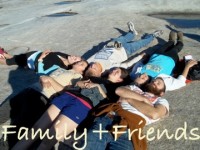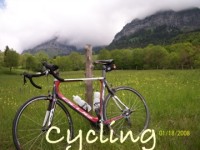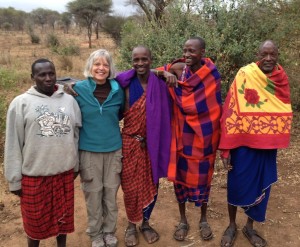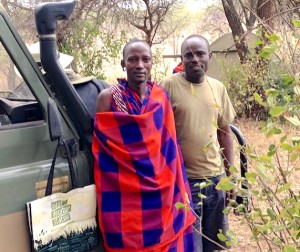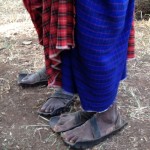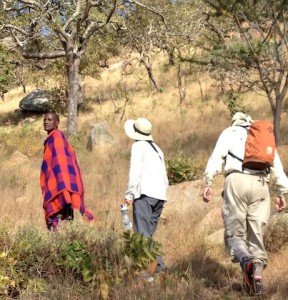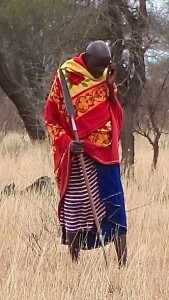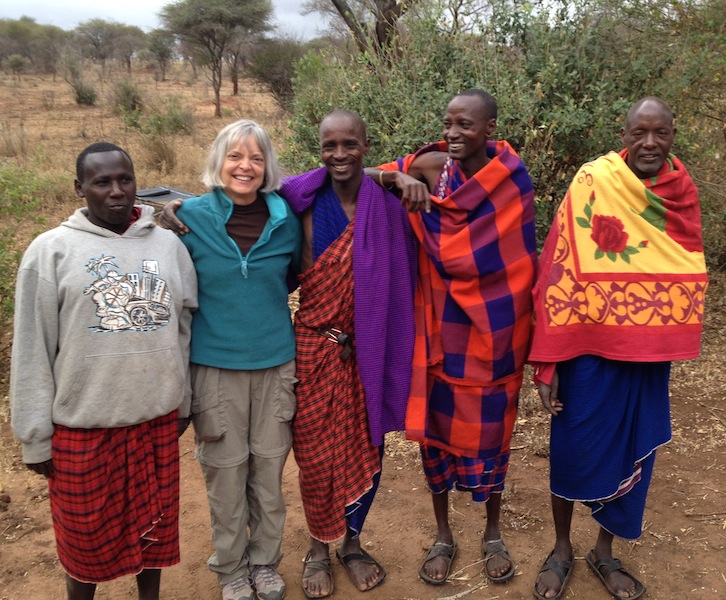
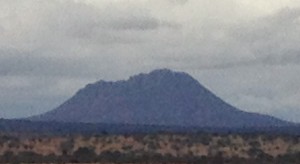
We camped near Oldonyo Sambu, “Striped Mountain” in Maasai. Later Betsy, Craig, Mika and I climbed it along with our Maasai guide.
We spent two nights camping on the Maasai Steppe below a mountain known as Oldonyo Sambu. Zebras, bushbuck, impala, wildebeest and oryx mix freely across Maasai grazing lands with herds of Maasai cattle and goats tended by herdboys. Lions, coyotes and jackals are always a possibility.
Mark Thornton Safaris has a special arrangement with 3 Maasai villages allowing us to visit this area. This is an important calving/birthing area for several animal species, and in exchange for payment, the villages agree to limit farming and maintain open savannah. Thornton also uses Maasai guides and guards from the villages when visiting the area.
Maasai, of course, are famous to westerners for their warrior culture and tribal rituals, which include various pain tolerance tests and male and female circumcision. It is said that European explorers and slave traders dreaded crossing Maasai land in the 1800’s due to their ferocity.
Three Maasai guides and one guard joined us in our camp for the time we were on the Maasai Steppe. Maasai boys herd goats and sheep by 8 years of age, moving up to herd cows once they’ve demonstrated their ability. They stay near the village as long as grazing is adequate; eventually in the dry season they have to go further afield—a day or more’s walk from the village—and junior warriors, in their later teens, take over herding duties. Through prescribed rites of passage, a boy becomes a junior warrior and later a senior warrior. A successful lion hunt is an important part of the warrior progression. Later still, as an adult approaches 40, he moves up to junior elder status, and finally senior elder status.
We had a couple impromptu spear-throwing contests with our guides, using the practice end of the spear. Our chances against a lion did not look good!
Mika identified our Maasai guides as junior elders, in their 40’s, no longer with responsibility to look after their herds–their sons and grandsons do that. They’ve done their work for family and tribe, though they will make strategic decisions regarding cattle grazing or selling or buying. We gathered around a campfire one night and exchanged questions, with Mika and Chagamba translating. Here are some things we learned.
All of our Maasai guides have killed lions, either individually or as part of a group. They’re the last generation to have regular encounters with lions. Now there aren’t many lions left, and the cattle aren’t attacked often. 20 men from their village have been killed by lions during hunts in their time as warriors, and probably 100 Maasai on Maasai Steppe land. It is a badge of honor and courage to have killed a lion. Sometimes it is revenge for a lion killing your livestock, but now, if a lion kills a cow from your herd, the government pays you more than the cow is worth so you won’t kill the lion.
They aren’t in favor of more farming by Maasai from their village. They need the land for grazing for their herds, which are growing. More farmland means less grazing land, but even some men from their village are growing more and more crops on village land. The world is changing. The needs of Africa’s wild animals are not part of their calculus.
Later, Mika told us that Maasai believe they are the most important people and that God has entrusted all cattle to them. When other tribes or farmers have cattle, they have stolen them from Maasai, and the Maasai warrior culture defends what is theirs. This explains their long running war with the Barbaig tribe, in which the Maasai and Barbaig took turns attacking each other to steal or re-claim cattle. This has largely stopped under modern Tanzanian governance.
The Maasai enter the 21st century adopting some new technologies quickly while often holding firm to old beliefs. Our Maasai guides carry cell phones along with their spears. They say all of their herd boys today carry cell phones out on the steppe in case of emergency. In addition, our Maasai guides wear trekking shorts under their traditional wraps–pockets to carry cell phones among other advantages. We even saw a herd boy driving his cattle while on a motorcycle! Many Maasai, traditionally herders, are also turning to farming, with expansive new corn and bean fields springing up across Maasai land.
At the same time, Maasai continue to measure a man by the number of cattle, sheep and goats he commands, which in turn decides how many wives he can afford, which determines how many children he fathers. One very wealthy Maasai is rumored to have 28 wives and over 100 children. The government built the district primary school next to his boma (living compound) for obvious reasons.
This all leads to serious herd and population growth while Maasai land area remains the same. The farming–which takes away grazing land–and herd growth result in serious overgrazing, as well as reduced habitat for Africa’s wild animals like impala, zebra, bushbuck, and wildebeest which traditionally share Maasai grazing lands with cattle. Maasai maintain some rights to use national parks and conservation areas on traditional Maasai land, and one can see them pressing herds further into protected territory.
An inevitable collision awaits.

This is the boundary road for Tarangire NP. To the left is Maasai land, to the right Tarangire NP. Overgrazing results in desert-like dirt patches on the left while the savannah grass is thick and tall on the right.

